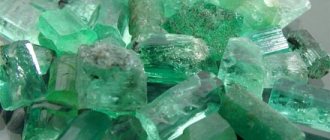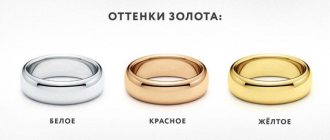Rules for exporting gold abroad have been changed
From April to June, the profit from the export of gold abroad turned out to be greater than the income from the sale of natural gas abroad. This is confirmed by data from the Central Bank of the Russian Federation and state customs structures. From April to May, gold exports from Russia in monetary terms amounted to $3.55 billion. While the “blue fuel” sent abroad brought Gazprom only $2.4 billion. In total, from mid-spring to June, $3.5 billion worth of gas was sold outside Russia.
The second quarter of 2021 showed the lowest gas exports since 2002. Sales volumes were three times lower than in the first quarter and decreased five times compared to 2010.
This decrease in demand for gas supplies is caused by the consequences of quarantine restrictions associated with the spread of COVID-19. The so-called Blue Stream, a gas pipeline in the direction of Turkey, has been suspended.
The cost of gas exports from Russia has halved compared to 2019. Now 1000 cubic meters costs only $94. Such prices do not provide Gazprom with production profitability of $105 per thousand cubic meters.
The export of gold abroad from April takes place according to new rules. Now banks, refineries and gold mining companies have equal rights to export precious metals. Export supplies from Russia have already begun to grow. Experts predict a further increase in gold sales abroad. The global economic crisis has spurred demand for the yellow metal. Domestic gold miners, due to high production volumes, can ensure supply on the international market. Restoring the demand for gas resources will take a long period.
Gold exports from Russia have become significantly easier since April, thanks to the possibility of obtaining a general license for producers for all subsequent export operations at once. Let us recall that previously each foreign contract required a separate permit.
The need for such changes in the rules for the export of gold is caused by the cessation of government purchases of the precious metal from domestic mining companies. The Central Bank of the Russian Federation stopped replenishing the country's gold reserves, which simply blocked gold miners' main sales channel for their products. Gold producers were asked to independently organize exports abroad. And the new rules for the export of precious metals are designed to help them with this.
Customs procedure for import and export of precious metals and stones
Decree of the President of the Russian Federation dated June 21, 2001 N 742 (as amended on June 6, 2010) “On the procedure for the import into and export from the Russian Federation of precious metals and precious stones”
Import of precious metals and precious stones into the Russian Federation is carried out by organizations and individuals without quantitative restrictions and licenses issued by the Ministry of Industry and Trade of the Russian Federation.
Export from the Russian Federation under the customs regime for the export of precious metals and precious stones specified in Appendices No. 2 and 5 is carried out without quantitative restrictions on the basis of licenses issued by the Ministry of Industry and Trade of the Russian Federation.
Export from the Russian Federation of precious metals and precious stones specified in Appendix No. 3 to these Regulations is carried out without quantitative restrictions and licenses, except for the case specified in paragraph four of clause 36 of these Regulations.
Licenses for the export of precious metals and precious stones specified in Appendix No. 2 to these Regulations are issued by the Ministry of Industry and Trade of the Russian Federation no later than one month from the date of registration of the application for a license in the manner determined by the Government of the Russian Federation.
State control over the export from the Russian Federation and import into the Russian Federation of precious metals specified in Appendices No. 2 and 3 to this Regulation is carried out by the Russian State Assay Office under the Ministry of Finance of the Russian Federation in the manner established by the Ministry of Finance of the Russian Federation.
Customs clearance of precious metals and precious stones imported into the Russian Federation and exported from the Russian Federation, specified in Appendices No. 2 and 3 to this Regulation, unprocessed precious metals, ores and concentrates of precious metals (HS code 2616), scrap and waste of precious metals ( HS code 7112), specified in Appendix No. 5 to this Regulation, is carried out at specialized customs posts and in specialized departments of the customs authorities of the Russian Federation with the mandatory participation of state controllers of the Ministry of Finance of the Russian Federation, except for the cases provided for in paragraph three of this paragraph.
Hallmarking of products made of precious metals and precious stones imported into the Russian Federation is carried out only upon presentation to the assay authorities of the relevant documents confirming the payment of customs duties in accordance with the declared customs regime. The procedure for marking these products under customs control is determined by the Federal Customs Service together with the assay supervision authorities.
Distinctive properties characterize the import/export of ingots, nuggets, raw metals, finished products with stones made of precious metals. These features are:
Export of unique nuggets is possible only with the permission of the Government. The remaining nuggets of precious metals are exported within the framework of quotas established by the Russian Government;
precious metal ingots exported from the territory of the Russian Federation must comply with the requirements of the relevant standards adopted by the LBMA (London Bullion Market Association) and Russia;
the export of ore and scrap of precious metals is prohibited by law;
when importing precious metals into Russia in the form of bars, the latter must be certified and branded in accordance with the legislation of the importing country;
the export of processed and unprocessed precious metals and stones (excluding diamonds and natural diamonds) is carried out without quantitative restrictions using a special license issued by the Ministry of Industry and Trade of the Russian Federation;
Export of precious metals and stones in the form of jewelry is carried out without restrictions on their quantity. No special license required.
What to do if problems arise?
If the customs authorities show persistent interest in you and accuse you of an offense, guided by the provisions of the “updated” Art. 226.1 of the Criminal Code of the Russian Federation, then this is a serious reason to contact the CUSTOMS-FRIEND law firm. The main task of a lawyer is to form the correct position, which will ultimately allow him to refuse to initiate a criminal case. Even if penalties are imposed on you, we will ensure that they are reduced to the minimum amount and will not allow the confiscation of your property.
Golden suitcases
However, it should be remembered that there are strict rules for the export from and import into the country of products made of precious metals and stones. And anyone who forgets about this risks getting into a very unpleasant situation before leaving abroad or upon returning.
Recently, Sheremetyevo customs officers detained a Russian woman who was trying to bring expensive jewelry from Nice - rings, earrings, pendants and two pairs of watches. At the same time, according to her, she forgot to declare all this precious cargo.
As a result of such “forgetfulness,” she had to pay a large fine and customs duty.
Customs officers recall a case when a 109-year-old grandmother, the elder of a family clan, was supposed to fly to one of the Transcaucasian republics. She was seen off by numerous Moscow descendants. Since the grandmother did not speak Russian, the customs officer asked the relatives to ask if she had gold. The old woman, smiling, took out a heavy bag with family heirlooms that could become an adornment of any museum.
This story had a happy ending: after paying a fine for missing a declaration, the grandmother and the jewelry still flew to their destination.
But another story ended more sadly. At Sheremetyevo customs, a Russian woman was detained who was trying to export 65 unique pieces of jewelry, including a diamond necklace made in 1910 and a silver pectoral cross with gems and enamels, made in the jewelry workshop of the supplier of the imperial court, Khlebnikov. The jewelry belonged to the wife of a large entrepreneur. She asked a friend to bring them to Kyiv. She, not thinking that she needed a special permit to export such things, unwittingly became a smuggler with all the ensuing consequences. The jewelry was confiscated, and a criminal case was opened against the passenger under the article of smuggling.
As you know, ignorance of the law does not exempt you from responsibility. Therefore, it would be useful to remind citizens traveling abroad that when going through customs control you should always be attentive and careful, especially if you are carrying a large amount of money, jewelry or antiques with you. Travelers carrying goods subject to mandatory declaration must include them in the customs declaration and go only through the “red corridor”.
Banal forgetfulness can result in charges of committing a crime and punishment. For example, for evading customs duties you can get 12 years in prison. The same amount is for smuggling cultural property. A charge of illegal trafficking in precious metals could result in a sentence of 7 years in prison.
Elena Grach, a representative of the press service of the Federal Customs Service, told an RG correspondent about how law-abiding citizens can avoid such troubles.
— I’ll start with the most popular question asked to our employees: how many products made of precious metals can be exported and imported. Yes, as much as you like, if you bought it for yourself, and not a commercial lot. But only if the total cost does not exceed 25 thousand dollars.
If it exceeds, you will have to pay a customs duty - 30 percent of the value indicated on the checks.
The right to move jewelry across the customs border is available to legal entities and individuals registered as individual entrepreneurs and specially registered with the federal government institution “Russian State Assay Office under the Ministry of Finance of the Russian Federation.”
If you have purchased jewelry abroad, it is important to remember that you must keep your receipts in order to present them at customs. If there are no receipts, then the cost of imported goods will be determined according to catalogs of foreign brands. Then prove that you bought the expensive ring in a small shop on Brighton Beach. Do you need it?
It is also important that your purchases do not look like a commercial shipment. There are no exact norms. But if a dozen identical watches are found in your luggage, customs officers will ask for an explanation.
Particularly heavy metals
The article on criminal liability was decriminalized back in 2011, but the problem soon returned, Deputy Finance Minister Alexei Moiseev complained last year. According to him, more and more often customs officers came across people who hung themselves with jewelry worth a large amount and tried to take them across the border without declaring them. In search of a solution, the Ministry of Finance and Customs found no other way to stop the “couriers” except to return criminal penalties.
To achieve this, the government has expanded the list of strategically important goods and resources. It included products made of precious metals and stones, as well as natural pearls, pocket and wrist watches with a body made of precious metal, cases, straps, bands and bracelets for watches made of precious metal, as well as ores and concentrates. Let us remind you that, according to the law, precious metals include gold, silver, platinum and platinum group metals, and precious stones (except pearls) include natural diamonds, emeralds, rubies, sapphires, alexandrites and unique amber.
The government list is used for the purposes of Article 226.1 of the Criminal Code, which specifically provides for punishment for smuggling of strategically important goods on a large scale, that is, worth more than a million rubles (from three to seven years in prison). Last year, the Ministry of Finance developed amendments to this article that would raise the bar for products made of precious metals and stones to two million rubles, and when calculating the price of goods transported through customs, they would take into account the part of the cost allowed for movement across the border of the EAEU up to ten thousand euros by plane (almost 752 thousand rubles at the current Central Bank exchange rate) and up to one and a half thousand euros by other means of transport (113 thousand rubles). However, the draft amendments never reached the government's consideration. Thus, the actual maximum cost is one million rubles. It is this minimum amount that must be used to transport goods without declaration, so that customs officers can bring the “golden courier” to criminal liability after November 24.
Today this type of business is very popular, so the import of expensive goods for sale is a common occurrence. The transportation of undeclared jewelry and watches with a total value of more than 25 thousand dollars is often recorded, says Andrey Andreev, managing partner of the U&Partners law office. “Moreover, there are cases where watches or jewelry purchased for personal use were confiscated, and the owners had to pay a large fine and customs duty,” he says.
To be brought to criminal liability, it is enough to transport undeclared jewelry worth a million rubles
Now, if you transport an overly expensive product without declaring it, the fine for legal entities and individuals under Article 16.2 of the Code of Administrative Offenses will range from 50 to 200 percent of the cost of this product, with or without confiscation. “The question remains of how to prove that jewelry was purchased abroad for personal purposes. Of course, if watches and jewelry look like a commercial lot, then it will not be possible to prove the opposite. Tougher liability almost completely eliminates the possibility of smuggling,” Andreev is sure.
According to the Ministry of Finance and the Assay Office, the volume of illegal trafficking in gold and products made from it alone is estimated at 30 tons per year, while the shadow market for jewelry and expensive watches made of precious metals and stones is estimated, according to the most conservative estimates, at 800-900 million rubles, says legal partner Dmitry Gorbunov.
Unlike jewelry, which is popular with “gold couriers,” ore and concentrates are exported abroad by legal entity exporters, for whom this is the main activity. “In those volumes in which a certain person, without going through the ore certification procedure and declaring the cargo, can try to export ore and concentrate outside the Russian Federation, smuggling is inappropriate from the point of view of making a profit,” the lawyer believes. In addition, the procedure for exporting ore and concentrate is strictly regulated, including by presidential decree, so their inclusion in the government’s list is a technical point that will not have consequences.
Workarounds for transporting jewelry will most likely be found quickly, and the most obvious is to understate the value of goods required to be declared, says Gorbunov. This may work if we are talking about goods purchased for personal consumption and not for sale, but the risk that the customs officer will not agree with the specified data remains, which, according to the new rules, can lead to a very real and severe punishment under Article 226.1 of the Criminal Code RF.
Errand boys for the Rothschilds: In whose interests is gold being exported from Russia?
Last year, Russia became one of the leading gold exporters in the world. Moreover, for the second year in a row we can talk about record supplies of metal to the world market. Gold flows are mostly directed to the British capital. What is behind this? The topic was discussed in the First Russian studio by columnist Yuri Pronko and Doctor of Economics Valentin Katasonov.
In 2021, gold exports from Russia reached record levels over the past few years. In total, 320 tons of gold were exported to London for a total of 18.5 billion US dollars. Exports have more than tripled compared to 2021. For example, as follows from the Federal Customs Service data, in September alone, almost 55 tons of gold bars were sent abroad from Russia, which is three times more than in August.
The growth in the volume of “gold exports” is impressive: in 2021, 10 tons of our gold were exported to the United Kingdom, in 2019 – 113.5 tons, and in 2021 already 320 tons.
Yuriy Pronko: – The amounts are colossal. What's happening? Either they decided to take advantage of the situation and earned super-profits on the favorable conditions of the gold bullion market, or the so-called elite creates for themselves a “reserve airfield” in Foggy Albin, realizing that the hour is not exactly right - and they will have to hastily pack their suitcases.
Valentin Katasonov: – It is unlikely that this is an “alternate airfield”, given the latest decisions of the London authorities. The oligarchs could not help but be alarmed by the freezing of the assets of some billionaires of Russian-Ukrainian origin. So if they drive currency and gold somewhere, it will be to offshore jurisdictions that are much safer, in their opinion.
I suppose that today the United States considers it that way, paradoxically. But here, as usual, they cannot see beyond their own noses and do not understand that the principle of “expropriation of expropriators” will still work.
Now the owners of money are rubbing their hands because they need to suck as much currency and gold out of Russia as possible. As for the real buyers of Russian gold, of course, this information is confidential, we can only talk about some macro statistics.
The largest importers are, of course, England and Switzerland. But they are “depository countries”, which contain the largest depositories of the yellow metal. And the beneficiaries of all this can be residents from a variety of jurisdictions. I do not exclude that even from Russia. But they will not directly store gold there; most likely, they use complex structures to protect their wealth from possible sanctions from London.
China is buying gold “quietly”
In general, this is a very interesting topic. I will name another major importer, who for some reason does not appear in the statistics of the World Gold Council. This is China. In China you cannot use official statistics - I mean, you cannot use Chinese official statistics: as they say, there are lies, there are big lies, and then there are statistics. And there is another fourth level – Chinese statistics.
If we look at the official statistics of China, they have even less gold than in Russia: we have 2 thousand 300, and they have - in round numbers - 2 thousand, even less. Every year Beijing buys about 2-2.5 times more gold than it produces itself. At the same time, China is the largest country in terms of production volume: approximately 400-500 tons of yellow metal per year. And gold imports are estimated at about a thousand tons.
Flows go mainly through Hong Kong. There are several more small channels. Some of this gold ends up on the Shanghai Exchange, but, as experts suggest, a lot of the metal accumulates in some unknown organizations. Most likely, these are, of course, official reserves of China, but they are not made public.
I do not rule out that there is some kind of subtle game going on between the Chinese party and state leadership and London bankers, including the Rothschilds. Today the price of gold is falling, I think this is very beneficial for them. Because they are actively buying precious metals.
I think that the ultimate beneficiaries are the Rothschilds and the groups associated with them. At the same time, our oligarchs can be used as “errand boys.” They may be buyers of Russian gold in London, but ultimately this gold will still go to the Rothschild balance sheet.
Siluanov is a Cerberus guarding the American dollar
– How do you assess the statement by Finance Minister Anton Siluanov that his department is starting to change the structure of the National Welfare Fund and will now focus on gold, following the example of the Central Bank?
– I have been hearing this mantra for a long time. On the other hand, a lot of time will pass from this statement to any practical solution. But even if some decision is made, the mountain will give birth to a mouse.
For example, they will say that five percent of assets can be formed from the yellow metal. And if you look at the statistics of leading Western countries, look at the structure of gold and foreign exchange reserves, you will not see a single country from the “golden billion” that has less than half of its gold reserves.
- I agree with you. Even in gold reserves there is 22-23% gold. But it is more likely that Siluanov will resign than there will be a structural change in the liquid part of the National Welfare Fund.
– Siluanov is the Cerberus who guards the interests of the American dollar. The fact is that the real competitor of the American currency in Russia is gold. And if it were legalized, the same gold market would appear as in China back in the early 2000s. And then we wouldn’t have the American dollar in domestic circulation at all, no one would need it... But they established a VAT of 20% on investment gold. And Siluanov, like a Cerberus, guards everything.
“And all attempts to change the situation are met with a harsh blow - they immediately block them.
This publication presents only part of the interview with Valentin Katasonov. The full version is available in the video version of the program with Yuri Pronko. In addition, look for another part of the conversation in text form at the link.
Import and export of gold by country of the world
The largest importers of gold, according to statistics from the International Trade Center for 2021, are:
- UK ($70.7 billion)
- Switzerland ($60.6 billion)
- China ($43.9 billion)
- India ($32.1 billion)
- Hong Kong ($13.9 billion)
- Türkiye ($11.2 billion)
- Singapore ($10 billion)
- USA ($9.6 billion)
- Thailand ($7 billion)
- UAE ($6.7 billion)
In total, in dollar terms, more than $306 billion worth of gold was imported in 2021. As for Russia , it is not among the top 50 countries for imports. Its gold imports in 2021 were only $15.8 million .
The largest exporters of gold in 2021, according to ICT statistics, are:
- Switzerland ($61.9 billion)
- Hong Kong ($25.1 billion)
- UK ($23.3 billion)
- UAE ($17.7 billion)
- USA ($17.1 billion)
- Australia ($16.2 billion)
- Canada ($15.3 billion)
- Singapore ($11.5 billion)
- Thailand ($7.5 billion)
- Peru ($6.7 billion)
Russia is in 13th place , gold exports in 2021 amounted to $5.7 billion , although in previous years it was significantly less.
What exactly will need to be marked?
The jewelry tagging program involves applying codes to gold, platinum and palladium, as well as various products made from them, including minted coins. In the case of precious stones, it is planned to use codes on tags for marking.
Today, the need to include silver goods in the list remains in question - current legislative norms provide for testing by manufacturers on a voluntary basis. In addition, identification of composite jewelry weighing less than three grams will not be required.
On the export of gold and securing the ruble
The mined gold arrives at refineries in the form of so-called doré bars weighing approximately 23 kilograms. In this alloy, the share of the main precious metal ranges from 70% to 85%. Foreign matter may account for more than 5% of the weight. The refining process involves melting and purifying raw materials and turning them into standard fine gold ingots. Products are marked by applying the mark of the refining enterprise and the final sample. Only after this can they be used to export gold.
There are 5 refining companies on the territory of the Russian Federation. The largest of them are Prioksky Non-Ferrous Metals Plant and Krastsvetmet. Their products are manufactured in full compliance with international standards and are included in the prestigious “Good Delivery” list on the Tokyo, New York and London international trading platforms. Therefore, they are used to export gold.
About 62% of refined gold in Russia is produced by “Krastsve produces only 22%, but its capabilities are enough to process all the yellow metal mined in the country.
Gold has been exported from Russia at all times. Under the Soviet Union, two conventional stages can be distinguished. From 1920 to 1929, as well as in the post-war period from 1945 to 1953, the country’s gold reserves were actively replenished and reached 2048.9 tons.
Nikita Khrushchev, having come to power, began to sell off gold reserves. Under the General Secretary of the CPSU Central Committee Brezhnev, annual gold exports dropped to almost 10 tons.
Under Mikhail Gorbachev, a record was set, and 1296.6 tons of precious metal were sold to London. The gold reserves that went to the Yeltsin government amounted to only 289.6 tons. At that time, gold was also exported. However, only due to the extracted volumes, which during the “Yeltsin” period amounted to 500 tons. The gold reserve remained untouched and gradually increased. By the beginning of January 2000, the country's gold reserves contained 414.5 tons of the precious metal.
As can be seen from the graph, before 2006, the entire volume of gold produced and mined was exported.
The country's gold reserves did not exceed 390 tons. The graph shows that active replenishment of gold reserves began only in 2007.
By mid-spring 2020, they amounted to 2,298.59 tons or 73.9 million troy ounces. On April 1, the Russian Central Bank announced the cessation of purchases of precious metals on the domestic market and the beginning of issuing permits for the export of gold abroad to direct producers, without the mediation of banks. From that moment on, a large volume of yellow metal rushed from Russia to London.
Gold exports in the period from January to October 2020 amounted to 262.1 tons, worth $15.1 billion in monetary terms. This volume of precious metal became a historical record for the Russian gold market. However, profits from the sale of other precious metals and stones abroad during the same time reached $23.529 billion.
Banking structures in Russia were simultaneously engaged not only in sales, but also in increasing their gold reserves, which by November reached a total of 121 tons.
It turns out that the export of gold was ensured by the precious metal produced and mined in 2019. And this is 367.95 tons. After it was purified at the refineries, in terms of gold with a purity of 999.9, meeting the requirements of international standards, the remaining weight was 312.76 tons.
There is a possibility that the remaining 50.66 tons will also be used for gold exports, rather than ending up in the gold reserves or being used for industrial and jewelry purposes.
The volume of gold produced in Russia in 2020 is significantly lower than the results of 2021 and amounts to 365 tons. However, the Central Bank has already sufficiently replenished its gold reserves. And commercial banks need precious metals only for a limited number of transactions. Therefore, with the abolition of the value added tax on the purchase of bullion, which has been discussed for a long time, a significant share of the mined precious metal will go to the export of gold.
Now many media outlets are hysterical about the sale of Russia's gold reserves. But can anyone confidently answer the question of how much precious metal should be contained in the gold reserves of the Central Bank? The Central Bank of the Russian Federation planned to increase the share of precious metals in the country’s international currency and gold reserves to 25%. This has already been achieved. The volume of precious metal located in Gokhran is classified.
Few people will take upon themselves the responsibility to express a personal judgment about how much gold reserves should be maintained by the regulator in order for the state's financial system to function properly, taking into account the transition of gold with a purity of 999.9 from 2022 to the status of a reserve of international importance of the first category.
The topic of gold export is also interesting because a certain volume of the country’s gold reserves should ensure the formation of a new monetary system, which involves backing the Russian national currency with real precious metals.
The gold reserves of the Central Bank of the Russian Federation today amount to 73.9 million troy ounces. To correlate gold with silver, you need to multiply the ratio of the cost of gold to the price of silver by 73.9. The resulting value is not constant, but is always greater than 66.7. Therefore, the gold reserves of the Russian Central Bank always correspond to approximately 4.929 million troy ounces of silver. If we consider the current ratio of the cost of gold to the cost of silver, equal to 73.8, then it turns out that the Central Bank’s gold reserves are comparable to 5.439 million ounces of silver precious metal.
By November 2020, there were about 12.158 trillion rubles in circulation in the form of paper cash. To provide this money supply with gold, according to financial calculations, a gold reserve of about 502 tons of the yellow metal will be required.
Historical experience suggests that gold reserves should cover about 15% of circulating cash. Therefore, the existing gold reserves of the Central Bank of the Russian Federation will easily provide the volume of the available money supply.
Little is missing - to issue 331.5 million St. George coins made of silver weighing one troy ounce, as well as 4.97 million investment coins made of gold weighing a quarter of a troy ounce worth $17 billion. Then the Russian national currency will be backed by gold.
They first tried to back the ruble with gold back in the Soviet Union in 1923. Because of this, the gold reserves were sharply emptied. The attempt was repeated in the spring of 1950, with a directive from the Council of Ministers establishing that each ruble corresponded to 0.222168 grams of gold precious metal. However, Nikita Khrushchev, who came to power, began to squander the country's gold reserves, and the reform failed.
Author: Vladimir Mitroshin, Doctor of Physics and Mathematics of Sciences











